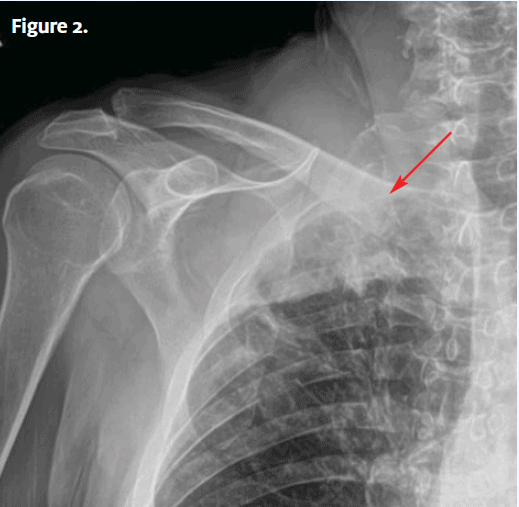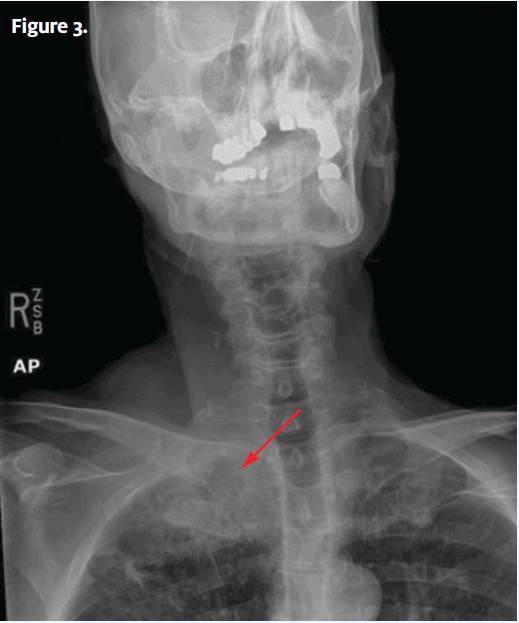Published on
Differential Diagnosis
- Hill Sachs deformity/fracture
- Anterior shoulder dislocation
- Posterior shoulder dislocation
- Calcific tendonitis
- Pancoast tumor

Diagnosis
The patient was diagnosed with Pancoast tumor, a primary bronchogenic carcinoma in the apical region of the lungs. It is also referred as a superior sulcus tumor due to proximity to the superior pleuro pulmonary sulcus of the apical lung.
The chest x-ray that was also ordered (Figure 3) makes the diagnosis clear, without the distraction of the history of shoulder pain and the imaging focus on the shoulder.

Learnings/What to Look for
- This tumor has unique characteristics and presentations due to its proximity to the superior thoracic aperture, apical pleura, subclavian vessels, brachial plexus, stellate sympathetic ganglion, recurrent laryngeal nerve, superior mediastinum, ribs, and the thoracic spine
- Initial symptoms are usually localized as shoulder or neck pain and
- Radiographic findings include an apical mass or asymmetric unilateral pleural thickening
- In advanced stage one may see lytic lesions of the ribs or spine
Pearls for Urgent Care Management and Considerations for Transfer
- Referral to oncology is warranted
- Treatment of the Pancoast tumor differs from other lung carcinomas due to anatomic location and proximity to neurovascular structures complicating a surgical procedure. Presurgical chemo and radiation therapy are often utilized to downsize the tumor. Surgical excision may require removal of the entire upper lobe with adjoining involved neurovascular, bony and lymph node structures
Acknowledgment: Images and case provided by Experity Teleradiology (www.experityhealth.com/teleradiology).
A 67-Year-Old Male with Shoulder and Neck Pain
1 2
